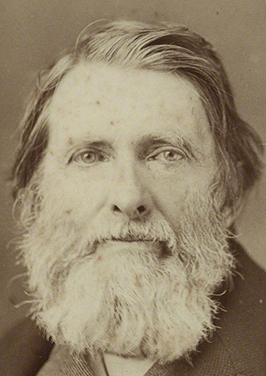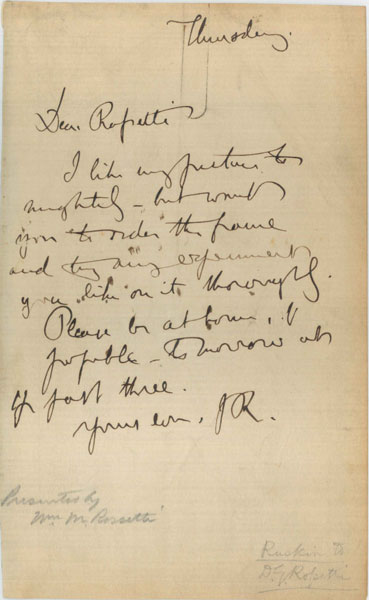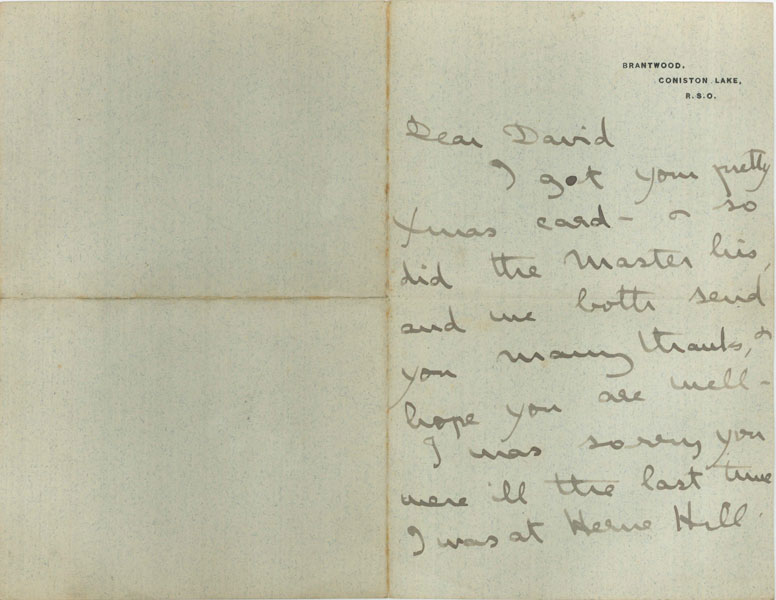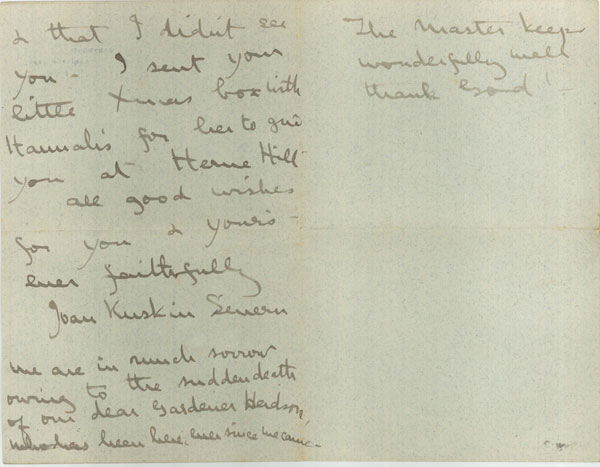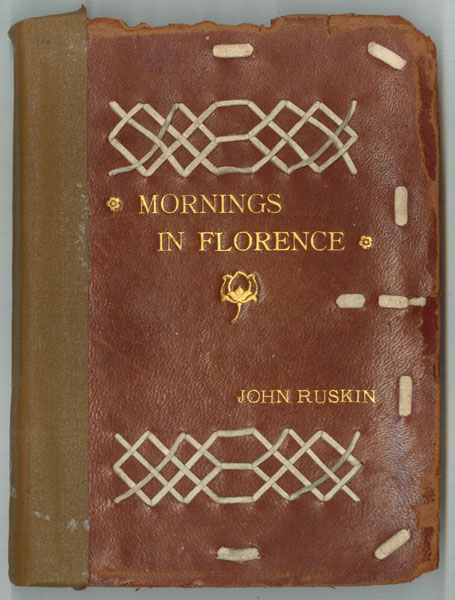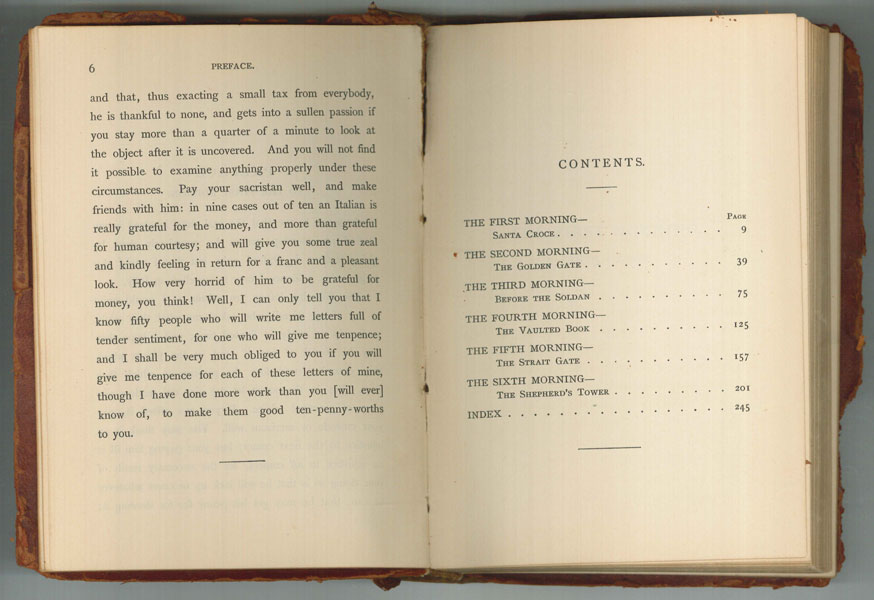Written by Melinda Creech, Graduate Assistant, Armstrong Browning Library
John Ruskin, the leading art critic of the nineteenth century, was also an art patron, a draughtsman, a watercolorist, a prominent social thinker, and a philanthropist. Modern Painters (1843), an extended essay that argued for “truth to nature,” won him widespread appeal. He supported the Pre-Raphaelites and championed social and political causes. Ruskin’s influence has become global, influencing artists, architects, writers, social planners, educators, politicians, and economists.
The Armstrong Browning Library holds seventeen letters written by John Ruskin and over one hundred books, some of them rare.
Ruskin tells Rossetti that he likes his picture and wants him to order the frame and
Try any experiment you like on it thoroughly.
David Fudge was the Ruskins’ coachman for nearly fifty years, often taking Mr. Ruskin to out of the way places and waiting while Ruskin went for walks or sketched scenes. In this heavily worn, fragment of a letter, Ruskin assures his driver, Mr. David Fudge, that he should receive orders from Mrs. Severn just as he would from Mr. Ruskin and assures him that
Neither she nor I will ever treat you with injustice….You can always appeal to me.
Mrs. Severn acknowledges the “pretty Christmas card” sent to her and to Mr. Ruskin and informs David that she has sent a “little Xmas box” to him.
John Ruskin. Mornings in Florence: Being Simple Studies of Christian Art for English Travellers. Copyright ed. Leipzig: Bernhard Tauchnitz, 1907.
This volume was intended to be used as a travel guide for persons viewing the art in Florence. The text gives Ruskin’s notes relating to Santa Croce, The Golden Gate, Before the Soldan, The Vaulted Book, The Straight Gate, and the Shepherd’s Tower.

